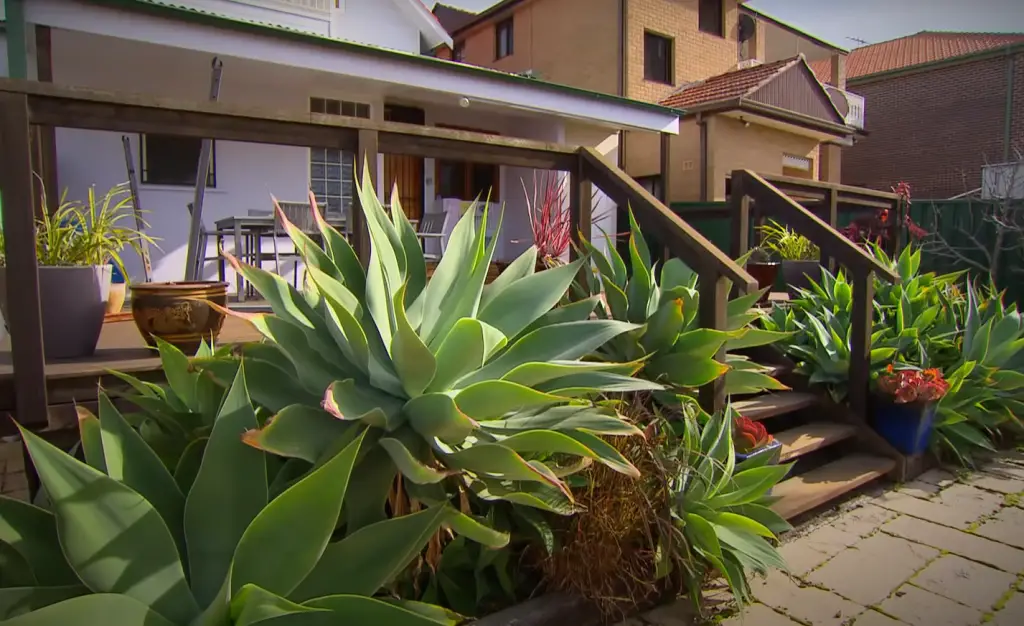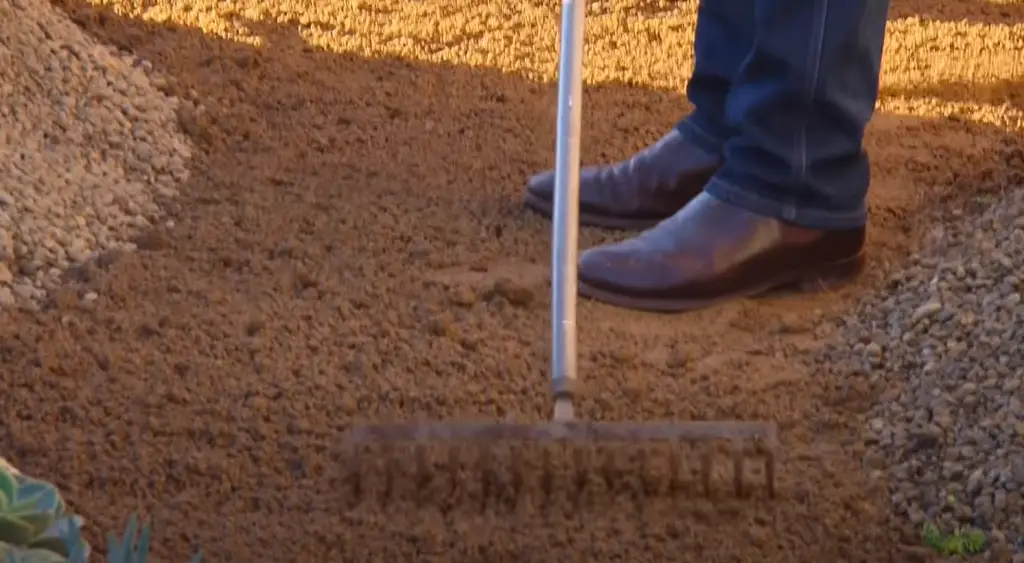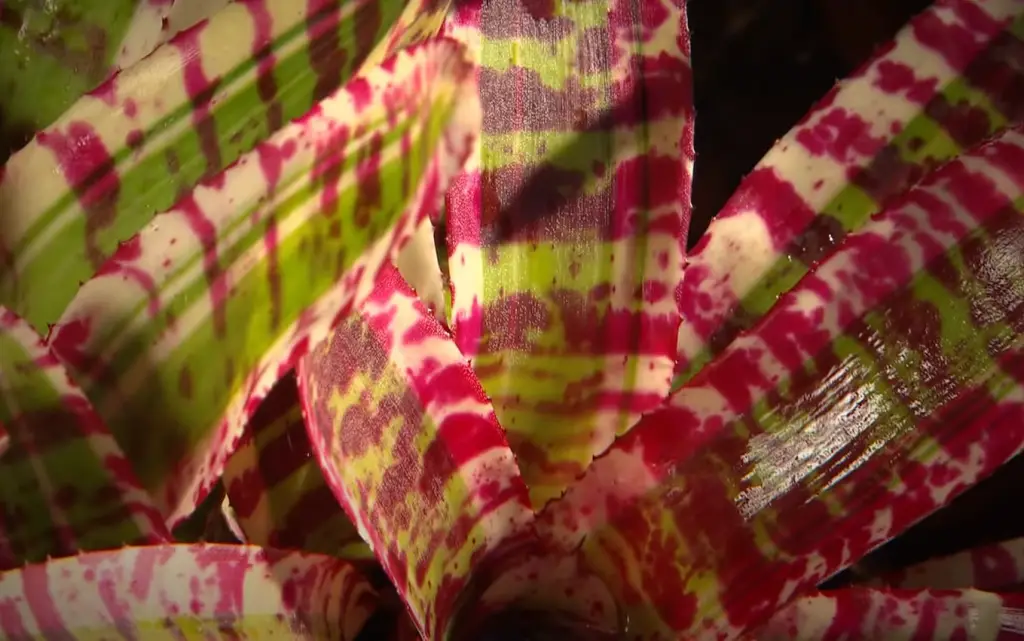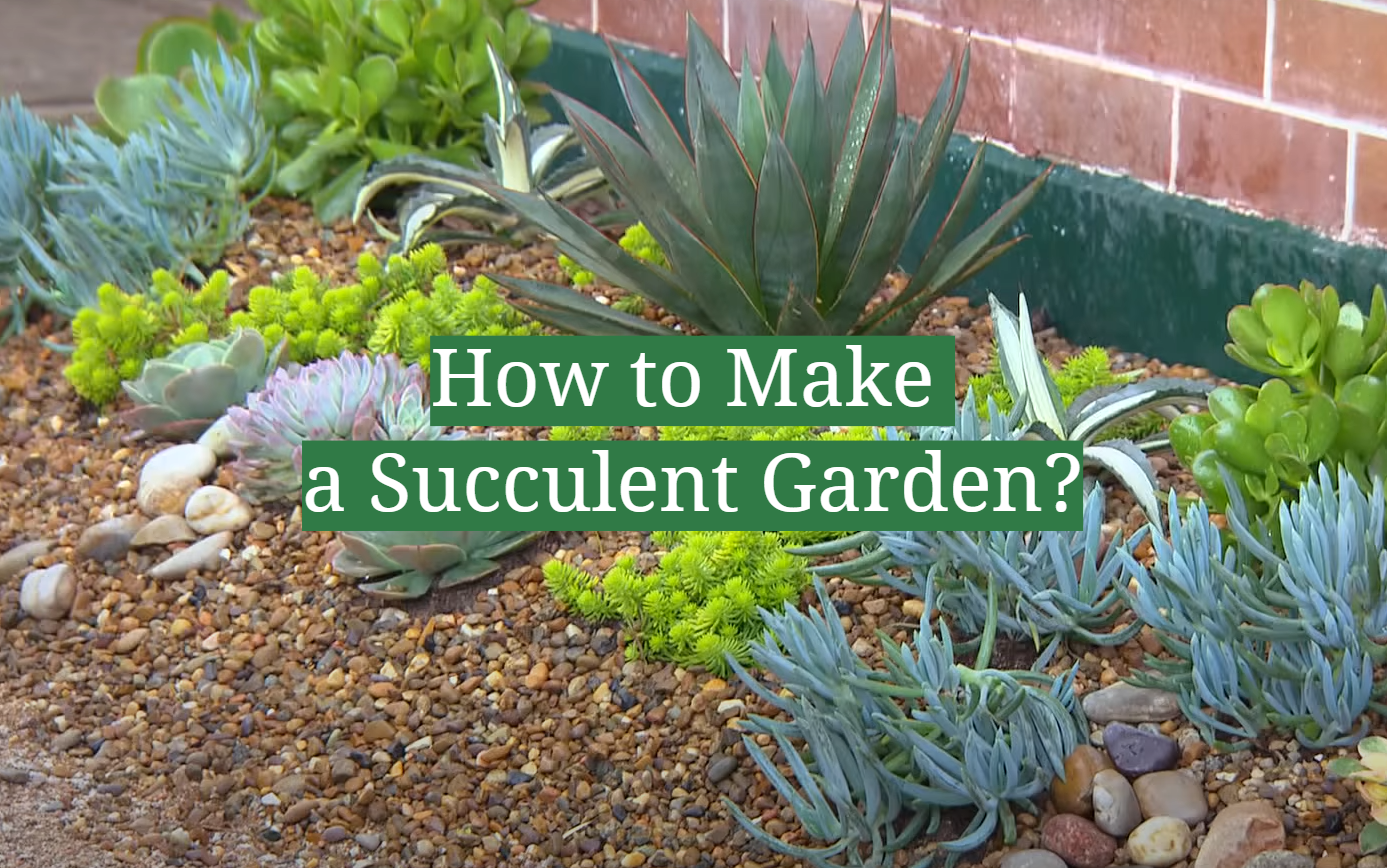Succulents are all the rage right now, and for good reason! They are easy to care for, come in a variety of shapes and sizes, and add a pop of color to any garden. If you’re thinking about adding succulents to your garden, or if you’ve already started and need some help, then read on! In this article, we will discuss everything you need to know about how to make a succulent garden.
Succulents in General
Succulents are a type of plant that stores water in their leaves, stems, or roots. They’re often found in arid climates and can tolerate long periods of drought.
There are many different types of succulents, including cacti, aloe vera, sedum, and echeveria. Some succulents are small enough to fit in the palm of your hand, while others can grow up to several feet tall.
While they share some similarities, succulents come in a wide variety of shapes, sizes, colors, and textures. This makes them a popular choice for both indoor and outdoor gardens alike.

But aside from that, succulents are known to be incredibly low-maintenance plants that are perfect for both beginner and experienced gardeners. Now that you know a little bit more about succulents in general, let’s move on to how you can create your own succulent garden. [1] [2]
Creating Your Succulent Garden
Find the right place for your garden
The first step in creating your succulent garden is to choose the right location. As we mentioned earlier, most succulents prefer bright, indirect sunlight. So, if you’re planning on growing your succulents indoors, make sure to place them near a window where they’ll receive plenty of light throughout the day.
If you live in a hot, dry climate, then your succulents will be perfectly happy outdoors. But if you live in an area with cold winters or lots of rainfall, then it’s best to grow your succulents indoors. That way, you can control the temperature and amount of water they receive.
However, keep in mind your succulent type when you’re choosing a location. Some succulents, like cacti, can tolerate full sun, while others, like aloe vera, need some shade to prevent their leaves from burning. [1] [2] [3]
Gather the supplies you’ll need
Once you’ve found the perfect location for your succulent garden, it’s time to gather the supplies you’ll need. Here are a few things you’ll need to get started:
- Your succulents of choice: As we mentioned earlier, there are many different types of succulents to choose from. So, take some time to research which varieties will work best in your particular location;
- A quality soil mix: Succulents need well-draining soil to prevent their roots from rotting. So, make sure to choose a potting mix that’s specifically designed for succulents or cacti. It’s important to use well-draining soil when growing succulents because they are susceptible to root rot. A good rule of thumb is to mix two parts sand or perlite with one part potting soil;
- A trowel: A trowel is a small hand trowel that’s specifically designed for planting succulents. It has a narrow, curved blade that’s perfect for digging holes in tight spaces;
- A watering can: While you won’t need to water your succulents as often as other plants, they do need to be watered occasionally. So, make sure to choose a watering can with a long spout that will help you avoid overwatering;
- Gardening gloves: While succulents aren’t known to be poisonous, some of them do have sharp spines. So, it’s always a good idea to wear gloves when handling them; [1] [2] [4]
Know your plant hardiness zone
When you’re choosing plants for your garden, it’s important to know your plant hardiness zone. This is the USDA’s way of classifying which plants can survive in which climates.
There are 13 different hardiness zones, ranging from Zone 1 (the coldest) to Zone 13 (the warmest). To find out what zone you live in, simply enter your zip code into the USDA website.
Once you know your plant hardiness zone, you can choose succulents that will be able to thrive in your climate. For example, if you live in Zone 10, then you can grow just about any type of succulent outdoors. But if you live in a colder climate like Zone 1 or Zone 2, then you’ll need to stick to growing succulents indoors. While some succulents can handle extreme temperatures, most do best in moderate climates. If you live in an area with very hot summers or very cold winters, it’s best to grow your succulents indoors where you can control the temperature and amount of water they receive.
Just because a plant is labeled as “hardy” doesn’t mean it will be able to survive in your climate. Make sure to research each type of succulent before adding it to your garden so that you know what conditions it needs to thrive. [1] [2] [3]
Play around with succulent arrangements
Now that you have all the supplies you need, it’s time to start playing around with succulent arrangements. One of the best things about succulents is that they come in all shapes and sizes. So, you can really get creative with how you arrange them in your garden.
If you’re not sure where to start, we suggest looking for inspiration online. There are tons of great photos and videos of succulent gardens that can give you some ideas. Or, if you’re feeling really adventurous, you can always create your own arrangement from scratch.
Once you’ve found an arrangement that you like, it’s time to start planting! Be sure to dig a hole that’s big enough for each plant’s root system. [1] [2] [3] [4]
Consider complimentary colors
When you’re choosing succulents for your garden, it’s important to consider the color of the plants. While some people prefer to stick to one or two colors, we recommend using a variety of colors to add interest to your garden.

Not sure which colors go well together? There’s no need to worry! You can always find tips online or in nature. Just take a walk around your neighborhood and see which colors catch your eye. [3]
Ensure proper soil drainage
One of the most important things to remember when growing succulents is to ensure proper drainage. Succulents are susceptible to root rot, which can be caused by sitting in water for too long.
To avoid this, make sure you use a well-draining potting mix and pots with drainage holes. You can find succulent-specific potting mixes at most garden centers, or you can make your own by mixing equal parts sand, perlite, and peat moss.
You can also add rocks or gravel to the bottom of your pots to help with drainage. This will help ensure that the roots don’t sit in water for too long and rot.
If you’re growing succulents outdoors, make sure you choose a spot in your garden that doesn’t stay wet after it rains. It’s also a good idea to raise your bed up off the ground if possible to improve drainage.
Another way to make your drainage better is to mix soil with sand. This will create more airflow in the pot and make it harder for water to pool. Usually, commercial soil mixes have this sorted, but it can’t hurt to add a little extra sand. Ensuring proper drainage is one of the key components of successful succulent care. [1] [2] [3] [4]
Transplant your succulents
The important step in creating your succulent garden is to transplant your succulents into individual pots or planters. This will give them the room they need to grow and prevent them from overcrowding each other.
When transplanting succulents, be careful not to damage their roots. Gently loosen the soil around the plant and slide it out of its current pot. Then, place the plant in its new pot and fill in any empty space with fresh succulent soil. Water your succulents thoroughly after transplanting them.
Once you’ve transplanted your succulents, water them lightly and allow them to adjust to their new homes for a few days. [3]
Taking care of your succulents
Now that you’ve created your succulent garden, it’s time to start taking care of your plants. Succulents are relatively low-maintenance, but they do need some specific care in order to thrive.
You may think water is harmful to succulents, but the opposite is actually true. Without enough water, succulents will start to wilt and their leaves will begin to fall off. However, you don’t want to overwater your plants either. The best way to water your succulents is to soak them thoroughly about once a week and then allow the soil to dry out completely before watering again.
In addition to watering, your succulents will also need plenty of sunlight. Succulents that don’t get enough sunlight will start to stretch out and become leggy. If your plants are looking stretched out, simply move them to a sunnier spot.
Fertilizing is another important part of taking care of your succulent garden. You should fertilize your plants about once a month using a water-soluble fertilizer specifically designed for cacti and succulents. Be sure to dilute the fertilizer according to the package directions before applying it to your plants. Succulents don’t have the most developed root systems, so they need some extra feeding.

For succulents planted outside, fertilizing once a week with a general-purpose fertilizer should be sufficient. For indoor plants, you can cut back to fertilizing once every month.
With just a little bit of care, your succulent garden will thrive. These tough plants are surprisingly easy to take care of as long as you give them what they need. So get out there and start gardening! [3] [4]
Don’t forget about pruning
Pruning is an important part of taking care of any type of plant, and succulents are no exception. Regular pruning will help your plants stay healthy and look their best.
To prune your succulents, simply cut off any dead or dying leaves with a sharp knife or pair of scissors. You can also remove any offsets (baby succulents) that you don’t want to keep.
Pruning isn’t just for aesthetics – it’s actually good for the plant. Removing dead leaves helps the plant conserve energy and resources, which can then be redirected to growing new, healthy leaves. [3] [4]
So don’t be afraid to get out there and give your plants a little trim every now and then. Your succulents will thank you for it!
FAQ
What do you need for a succulent garden?
Starting a succulent garden is easy and inexpensive. All you need is a shallow dish or bowl, some potting mix, and your favorite succulents.
If you want to add a little bit of decoration to your succulent garden, consider using gravel, sand, or small stones as a top dressing. This will help keep the soil in place and prevent water from pooling on the surface of the soil. Another option for adding interest to your succulent garden is to use different colored pots or containers. This can add a pop of color and make your garden more visually appealing.
How do you make a cute succulent garden?
There’s no one-size-fits-all answer to this question, as the level of difficulty will vary depending on the type of succulent you choose, and how many you want to include in your garden. However, generally smaller succulents are easier to care for than larger ones.
To get started, you’ll need a few supplies: succulents, potting soil, rocks or gravel, and a container. Once you have your supplies gathered, you can begin planting your succulents.

How do you make an outdoor succulent garden?
If you want to create a succulent garden outdoors, there are a few things you need to take into account. First, pick a spot in your yard that gets decent sunlight coverage, but be sure not to expose your plants to too much direct sunlight, as this can cause them to sunburn. You’ll also need to make sure the soil in your chosen spot is well-draining; if it isn’t, you can amend it with some sand or gravel. Once you’ve got a good location and well-drained soil, you can start planting! When selecting succulents for your garden, be sure to choose varieties that are native to your area so they will be better adapted to survive the climate conditions.
Can you plant succulents in just soil?
You can, but there are a couple of things to keep in mind. First, succulents don’t like to sit in wet soil, so it’s important to make sure the pot has good drainage. Second, succulents need well-draining soil that’s not too dense, so a cactus or succulent mix is ideal. You can also make your own mix by adding sand or perlite to regular potting soil.
If you’re planting succulents in pots without drainage holes, be sure to use a layer of gravel or rocks at the bottom of the pot to help with drainage. And as always, when watering succulents be sure to do it sparingly—they don’t like soggy roots!
Useful Video: How to Create a Succulent Garden
Conclusion
As you can see, creating a succulent garden is easy and doesn’t require much effort. With just a few supplies and some creativity, you can have a beautiful garden that will thrive for years to come. Come up with a design and choose an ideal location, then let your succulents take root and grow. Of course, you shouldn’t forget about plant care either! Water and fertilize regularly and provide good drainage to keep your plants healthy. With a little bit of TLC, your succulent garden will be the envy of all your friends and neighbors. So, what are you waiting for? Get out there and start planting!
References:
- https://www.gardeningknowhow.com/ornamental/cacti-succulents/scgen/outdoor-succulent-garden.htm
- https://www.lawnstarter.com/blog/landscaping/how-to-create-a-succulent-garden/
- https://www.gardendesign.com/succulents/planting.html
- https://www.thespruce.com/make-a-succulent-plant-container-garden-848006











Leave a Reply
View Comments